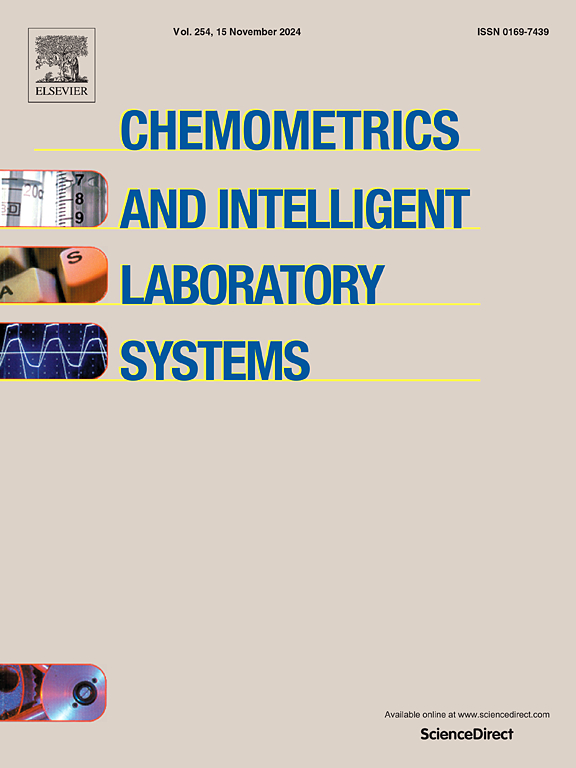一种基于成像分析、化学计量学和机器学习的非接触方法,用于预测液体培养中压力源对秀丽隐杆线虫种群的致死率
IF 3.8
2区 化学
Q2 AUTOMATION & CONTROL SYSTEMS
Chemometrics and Intelligent Laboratory Systems
Pub Date : 2025-06-01
DOI:10.1016/j.chemolab.2025.105450
引用次数: 0
摘要
这项工作的重点是开发一种客观、可重复和非破坏性的方法来预测液体培养基中秀丽隐杆线虫种群的致死率,从数值角度解决这些培养基类型中成像分析的缺陷,并将化学计量学和机器学习程序应用于通过基本图像设备和处理获得的成像数据。实验通过拍摄暴露在三种不同条件下(过氧化氢、热和紫外线辐射)的线虫种群的视频进行。将处理后的视频数据集作为回归方法中不同配置的预测因子。与原始数据集相比,降维方法提高了成像信息的预测能力。此外,超级学习者模型的效果最好,这说明了将预测能力较低的模型的结果结合起来,形成预测能力较高的元模型的协同效应。本文章由计算机程序翻译,如有差异,请以英文原文为准。
A non-contact methodology based on imaging analysis, chemometrics, and machine learning to predict the lethality of stressors on C. elegans populations in liquid culture
This work was centred on developing an objective, reproducible and non-destructive methodology to predict the lethality of C. elegans populations contained in liquid culture mediums, addressing the handicaps presented for imaging analysis in those media types from a numerical point of view, applying chemometric and machine learning procedures on imaging data obtained with a basic image device and processing. The experiment was carried out by taking videos from nematode populations exposed to different conditions of three stressors (hydrogen peroxide, heat and UV radiation). The processed video datasets were used as predictors for different configurations in regression methods. The dimensionality reduction approach improved the prediction capacity of the imaging information compared to the raw dataset. Moreover, the best result was achieved with a super learner model, demonstrating the synergistic effect of combining results from models with lower prediction capacity to develop a meta-model with high prediction capabilities.
求助全文
通过发布文献求助,成功后即可免费获取论文全文。
去求助
来源期刊
CiteScore
7.50
自引率
7.70%
发文量
169
审稿时长
3.4 months
期刊介绍:
Chemometrics and Intelligent Laboratory Systems publishes original research papers, short communications, reviews, tutorials and Original Software Publications reporting on development of novel statistical, mathematical, or computer techniques in Chemistry and related disciplines.
Chemometrics is the chemical discipline that uses mathematical and statistical methods to design or select optimal procedures and experiments, and to provide maximum chemical information by analysing chemical data.
The journal deals with the following topics:
1) Development of new statistical, mathematical and chemometrical methods for Chemistry and related fields (Environmental Chemistry, Biochemistry, Toxicology, System Biology, -Omics, etc.)
2) Novel applications of chemometrics to all branches of Chemistry and related fields (typical domains of interest are: process data analysis, experimental design, data mining, signal processing, supervised modelling, decision making, robust statistics, mixture analysis, multivariate calibration etc.) Routine applications of established chemometrical techniques will not be considered.
3) Development of new software that provides novel tools or truly advances the use of chemometrical methods.
4) Well characterized data sets to test performance for the new methods and software.
The journal complies with International Committee of Medical Journal Editors'' Uniform requirements for manuscripts.

 求助内容:
求助内容: 应助结果提醒方式:
应助结果提醒方式:


